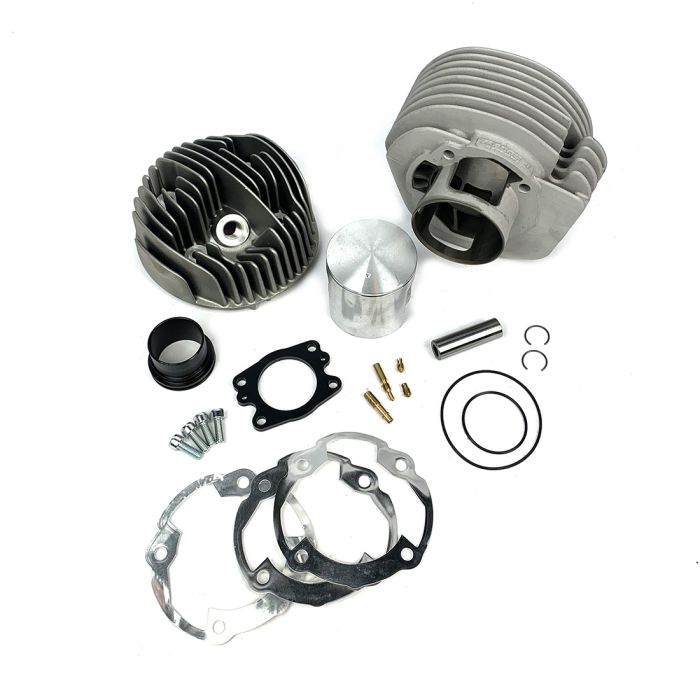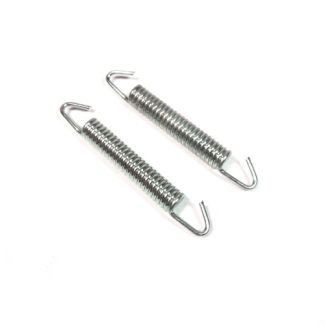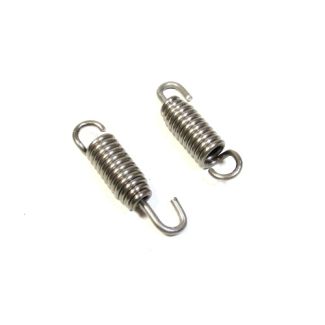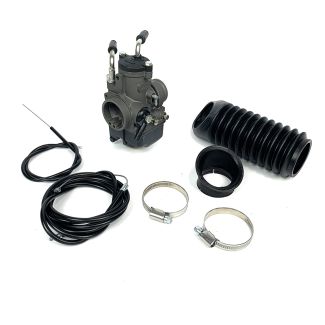Malossi MHR 177cc Kit Vespa P125 PX 125/150 & Stella
| Brand | Malossi |
|---|---|
| Description | Malossi MHR 177cc Cylinder Kit Vespa P125x, PX 125/150 and other 3-Port vintage models. 177 MHR - Malossi Hyper Racing (MHR) cylinder kit is all aluminum with a Nicasil coating. This improves heat dissipation and increases durability compared to the predecessor made of cast iron. The port layout has been completely revised and is based on that of the successful and powerful MALOSSI 210cc cylinders. This means 4 transfers and 3 boost ports. The cylinder head is sealed via an O-ring and located to the cylinder via dowels. A lightweight Vertex 1-ring piston is used as the piston. Power Range - 21-28 HP
TECHNICAL FEATURES Cylinder Built from scratch, in high-strength aluminium alloy and cylinder sleeve with nickel-chromium coating. Consisting of an even thickness central core around the cylinder sleeve and the ports, a constant heat exchange is ensured, therefore, a controlled intake temperature of the gases in the chamber and an optimal heat exchange at the exhaust. It has aerodynamically profiled cooling fins around the core, designed to be penetrated with the best possible efficiency by the cooling air. The major innovation lies in the totally revamped and coated ports, introducing the latest CVF, upgraded thanks to experience gained from competitions. There are now 7 ports, a distinctive trait of Malossi kits, thank to which you can get the best fluid dynamic performance.
Piston Fused with an innovative material, consisting of a steel core coated with an aluminium and silicon alloy, which makes it extremely lightweight. This also gives it excellent corrosion resistance, even at high temperatures and a heat reflection from combustion. The heat flow is, therefore, directed to the dissipation surfaces, facilitating the cooling of the combustion chamber, ensuring that it stays within the range of optimum temperatures. There is ribbing in the inner part of the skirt, inserted in the fused parts which strengthens the parts which undergo the most mechanical stress, thus allowing the weight of the piston to be reduced to a minimum. The windows in the rear part and the diametrical grooves, on the other hand, guarantee the greatest possible intake of fresh air flow towards the cylinder ports.
Head Another revolution in the construction philosophy of two-stroke engines: the cooling fins have been dimensioned to optimise the heat flow from the chamber to the outside, but now are also shaped, based on modern simulations to allow maximum penetration of the air coming from the cooling system, which now touches the head with a 10 % plus increase in performance compared to a traditional system with straight fins. The characteristic hemispherical combustion chamber is machined with tolerances to the tenth of a millimetre and produces a high turbulent combustion, with pressure peaks calculated at better speeds to achieve maximum performance in terms of torque and power. The high temperatures that are reached in this particular crossover zone between the head and the cylinder that often create hot spots and sparks are regulated using an aerospace-style solution: a pipe with a vacuum chamber that is formed with two dividing walls and a series of baffles in input and in output: Which, thanks also to a precise surface profile, channel a part of the cooling air, forcing it not only to touch the surfaces, but also to expand, decreasing the pressure and, therefore, temperature of the walls on the edge of the combustion chamber, based on a specific principle of physics.
|




